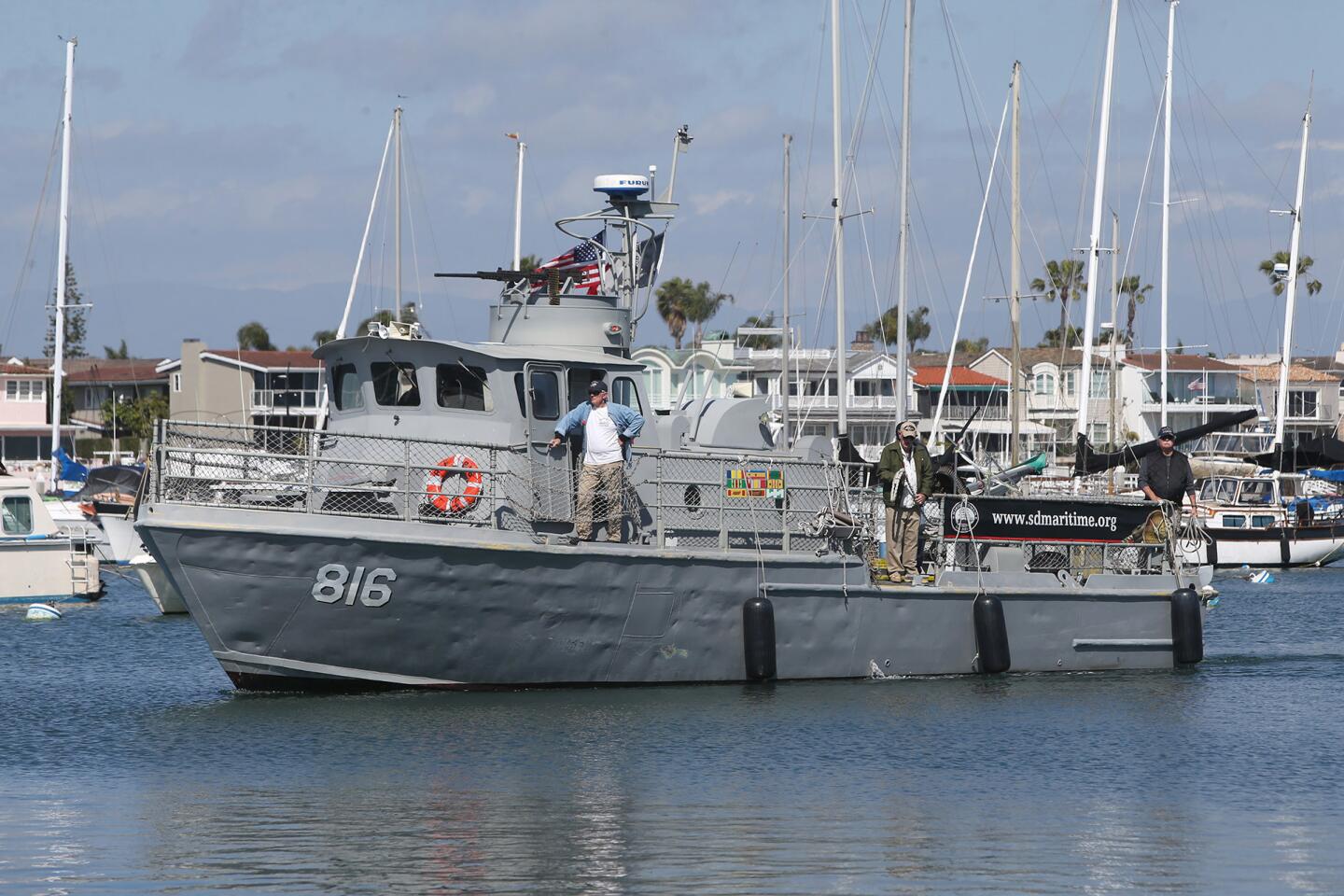
Naval history is packed with incredible stories, daring adventures, and groundbreaking innovations. Ever wondered how ancient mariners navigated vast oceans without modern technology? Or how naval battles shaped the course of history? Naval history facts can be both thrilling and educational, offering a glimpse into the past that has shaped our present. From the legendary voyages of explorers like Christopher Columbus to the strategic maneuvers in World War II, the sea has always been a stage for human ingenuity and bravery. Whether you're a history buff or just curious, these 28 best naval history facts will surely captivate your imagination and deepen your appreciation for the maritime world.
The Dawn of Naval Warfare
Naval history is rich with fascinating events and innovations. From ancient times to modern-day, the evolution of naval warfare has shaped the course of human history.
-
The first recorded naval battle took place in 1210 BC between the Egyptians and the Sea Peoples. This battle marked the beginning of organized naval warfare.
-
The Greeks invented the trireme, a powerful warship with three rows of oars, around the 7th century BC. These ships played a crucial role in Greek naval dominance.
-
The Battle of Salamis in 480 BC was a turning point in the Greco-Persian Wars. The Greek navy's victory over the Persians secured Greek independence and shaped Western civilization.
Medieval Naval Innovations
The Middle Ages saw significant advancements in naval technology and tactics. These innovations laid the groundwork for future naval powers.
-
The Vikings were master shipbuilders and navigators. Their longships, designed for speed and versatility, allowed them to raid and trade across Europe from the 8th to the 11th centuries.
-
The Byzantine Empire developed the dromon, a fast and agile warship equipped with Greek fire, an incendiary weapon that could burn on water. This gave the Byzantines a significant advantage in naval battles.
-
The Battle of Sluys in 1340 was a decisive naval engagement during the Hundred Years' War. The English fleet's victory over the French ensured English control of the English Channel.
Age of Exploration
The Age of Exploration brought about a new era of naval history, with European powers seeking new trade routes and territories.
-
Christopher Columbus's voyage in 1492, sponsored by Spain, led to the discovery of the New World. This event marked the beginning of European colonization in the Americas.
-
The Portuguese developed the caravel, a small, highly maneuverable ship that could sail against the wind. This innovation allowed them to explore the African coast and establish trade routes to India.
-
The Spanish Armada's defeat in 1588 by the English navy marked the decline of Spanish naval dominance and the rise of England as a major naval power.
The Age of Sail
The Age of Sail saw the rise of powerful navies and epic sea battles that shaped the course of history.
-
The Battle of Trafalgar in 1805 was a pivotal naval engagement during the Napoleonic Wars. Admiral Nelson's victory over the French and Spanish fleets ensured British naval supremacy for over a century.
-
The USS Constitution, launched in 1797, is the oldest commissioned warship still afloat. Known as "Old Ironsides," it earned its nickname during the War of 1812 when British cannonballs bounced off its hull.
-
The Battle of the Nile in 1798 saw Admiral Nelson's fleet destroy the French navy, cutting off Napoleon's supply lines and securing British control of the Mediterranean.
The Industrial Revolution and Modern Naval Warfare
The Industrial Revolution brought about significant changes in naval technology, leading to the development of ironclad ships and modern naval tactics.
-
The HMS Warrior, launched in 1860, was the world's first iron-hulled warship. Its design revolutionized naval architecture and rendered wooden warships obsolete.
-
The Battle of Hampton Roads in 1862 was the first clash between ironclad warships, the USS Monitor and the CSS Virginia. This battle marked the end of the era of wooden warships.
-
The sinking of the RMS Lusitania by a German U-boat in 1915 played a significant role in bringing the United States into World War I.
World War II and Beyond
World War II saw some of the largest and most significant naval battles in history, shaping the modern world.
-
The Battle of Midway in 1942 was a turning point in the Pacific Theater. The US Navy's victory over the Japanese fleet shifted the balance of power in the Pacific.
-
The D-Day invasion in 1944 involved the largest amphibious assault in history, with over 5,000 ships supporting the Allied landings on the beaches of Normandy.
-
The sinking of the German battleship Bismarck in 1941 was a major victory for the Allies. The Bismarck had been a significant threat to Allied shipping in the Atlantic.
Cold War and Modern Naval Developments
The Cold War era saw the development of nuclear-powered submarines and aircraft carriers, changing the nature of naval warfare.
-
The USS Nautilus, launched in 1954, was the world's first nuclear-powered submarine. Its ability to remain submerged for extended periods revolutionized submarine warfare.
-
The Cuban Missile Crisis in 1962 saw a tense naval blockade by the US Navy, preventing Soviet ships from delivering nuclear missiles to Cuba.
-
The Falklands War in 1982 highlighted the importance of aircraft carriers and modern naval aviation. The British victory over Argentina demonstrated the effectiveness of carrier-based operations.
Naval History in Popular Culture
Naval history has also left a lasting impact on popular culture, inspiring countless books, movies, and television shows.
-
The novel "Moby-Dick" by Herman Melville, published in 1851, is a classic tale of obsession and revenge set aboard a whaling ship.
-
The movie "Master and Commander: The Far Side of the World," based on the novels by Patrick O'Brian, depicts the adventures of a British naval captain during the Napoleonic Wars.
-
The television series "Vikings" dramatizes the exploits of legendary Viking chieftain Ragnar Lothbrok and his seafaring warriors.
Naval Museums and Memorials
Naval history is preserved and celebrated in museums and memorials around the world, allowing people to learn about and appreciate this rich heritage.
-
The USS Arizona Memorial in Pearl Harbor commemorates the sailors who lost their lives during the Japanese attack on December 7, 1941.
-
The National Maritime Museum in Greenwich, England, houses an extensive collection of naval artifacts and exhibits, including Admiral Nelson's uniform from the Battle of Trafalgar.
-
The Battleship Missouri Memorial in Hawaii allows visitors to explore the ship where the Japanese surrender was signed, ending World War II.
-
The Intrepid Sea, Air & Space Museum in New York City features the aircraft carrier USS Intrepid, which served in World War II, the Cold War, and the Vietnam War.
The Final Word on Naval History
Naval history is packed with fascinating tales and remarkable events. From the mysterious disappearance of the USS Cyclops to the legendary exploits of Admiral Nelson, these stories shape our understanding of the world’s oceans. The Battle of Midway turned the tide in WWII, while the USS Constitution remains a symbol of American resilience. Pirates like Blackbeard and naval innovations like the ironclad ships changed maritime warfare forever.
Understanding these facts not only enriches our knowledge but also highlights the bravery and ingenuity of those who sailed the seas. Whether you're a history buff or just curious, naval history offers a treasure trove of intriguing facts. Dive into these stories, and you'll find a world of adventure, strategy, and heroism that continues to inspire. So, next time you see a ship on the horizon, remember the incredible history it represents.
Was this page helpful?
Our commitment to delivering trustworthy and engaging content is at the heart of what we do. Each fact on our site is contributed by real users like you, bringing a wealth of diverse insights and information. To ensure the highest standards of accuracy and reliability, our dedicated editors meticulously review each submission. This process guarantees that the facts we share are not only fascinating but also credible. Trust in our commitment to quality and authenticity as you explore and learn with us.


